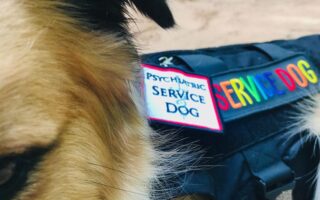In the vibrant world of dog agility, where speed, precision, and teamwork come to life, one crucial piece of equipment stands tall among the rest: the weave poles. Designed to challenge and enhance a dog’s natural instinct to navigate through obstacles, agility weave poles serve as a testament to the bond between handler and canine. As we delve into the intricacies of these slender, upright poles, we uncover not just their role in competition and training, but also the profound impact they have on a dog’s physical and mental well-being. Whether you’re a seasoned competitor or a curious newcomer to the realm of agility, understanding the weave poles can elevate your approach to training and deepen the connection you share with your four-legged partner. Join us as we explore the significance, techniques, and best practices that surround this essential agility element.
Table of Contents
- Understanding the Fundamentals of Agility Weave Poles
- Essential Training Techniques for Mastering Weave Pole Skills
- Choosing the Right Equipment: Factors to Consider for Optimal Performance
- Troubleshooting Common Challenges in Agility Weave Pole Training
- Q&A
- The Conclusion
Understanding the Fundamentals of Agility Weave Poles
Agility weave poles are an essential component of dog agility courses, designed to challenge a dog’s speed, precision, and intelligence. These vertical poles, typically aligned in a straight line, require dogs to navigate through them in a specific weaving pattern. Training a dog to master this skill not only enhances their agility performance but also reinforces the bond between the dog and handler through cooperation and trust. Understanding the mechanics of the poles is crucial: they often stand at a height of about 3-5 feet and are spaced approximately 24 inches apart, creating a rhythm that helps dogs develop coordination and spatial awareness.
To effectively train a dog for weave poles, keep the following key factors in mind:
- Spacial Consistency: Maintain uniform distances and pole heights to foster a reliable learning environment.
- Positive Reinforcement: Use treats and praise to encourage the dog with each correct pass through the poles, establishing a positive association.
- Gradual Introduction: Start with a few poles, gradually increasing the number as the dog becomes comfortable and proficient.
- Handler Positioning: Ensure the handler is positioned correctly to guide the dog through the poles, utilizing hand signals or verbal cues effectively.
Essential Training Techniques for Mastering Weave Pole Skills
To develop proficiency in weaving through agility poles, it’s essential to focus on fundamental techniques that lay the groundwork for advanced skills. Start by introducing your dog to the poles in a relaxed setting to build comfort and confidence. Positive reinforcement is key; reward your dog with treats or praise every time they successfully navigate through the poles. Consider funnel training where you initially space the poles wider apart to create a larger corridor. This allows your dog to understand the concept without the pressure of tight turns, gradually decreasing the space between the poles as they improve. Incorporating visual cues and body language will further assist your dog in developing understanding and executing the weave with finesse.
Another effective method is to vary the approach to the weave poles to keep the training sessions engaging. Implementing different angles while approaching the poles can enhance your dog’s adaptability. You might also use lateral reward placement, where rewards are given for staying aligned with the poles rather than progressing straight through, thus reinforcing the importance of maintaining a weaving path. Below is a brief outline of practical techniques for mastering weave pole skills:
| Technique | Description |
|---|---|
| Funnel Training | Wider spacing for initial comfort and understanding. |
| Positive Reinforcement | Using treats or praise to encourage and reward success. |
| Varied Angles | Changing the approach direction to build adaptability. |
| Lateral Reward Placement | Encouraging alignment with poles through strategic rewards. |
Choosing the Right Equipment: Factors to Consider for Optimal Performance
When selecting agility weave poles, several factors come into play that can greatly influence your dog’s performance and training experience. Material is one of the primary considerations; poles can be made from various substances, including plastic, fiberglass, or metal. Each material affects the weight and durability of the poles, so think about where the poles will be used—indoors or outdoors—and the types of weather conditions they will face. Additionally, the diameter of the poles is important, as a thicker pole may be more stable but can be challenging for smaller dogs to navigate. Aim for a balance that suits your dog’s size and skill level.
Another crucial aspect to consider is the spacing between the poles. Standard spacing is typically 24 inches, which is suitable for most dogs, but adjusting the distance can aid in training for both beginner and advanced dogs. Moreover, think about the height of the poles. While most weave poles are designed to be adjustable, finding the right height can promote better performance and confidence. Look for products that offer easy adjustability and stability, making training sessions enjoyable and effective.
Troubleshooting Common Challenges in Agility Weave Pole Training
Training your dog to navigate agility weave poles can be a rewarding experience, but it often comes with its own set of challenges. One common issue is the dog’s lack of focus or motivation, which can lead to frustration for both the handler and the pup. To tackle this, consider incorporating varied rewards such as treats, toys, or play breaks to maintain enthusiasm. Start with one pole, gradually increasing the number as confidence builds. Consistency is key; practice in short, frequent sessions to avoid overwhelming your dog.
Another frequent challenge is incorrect pole entry, where dogs may bypass or improperly navigate the poles. It may help to use visual markers such as cones or different colored tape to guide them into the correct path. Ensure to keep the training environment calm and distraction-free in the initial stages. If your dog struggles with the poles, it might be beneficial to utilize a training partner to help demonstrate the proper technique, providing a positive role model. Solutions may vary, but patience and positive reinforcement are essential components of overcoming these hurdles.
Q&A
Q&A: Unraveling the Mystery of Agility Weave Poles
Q1: What are agility weave poles?
A1: Agility weave poles are a series of vertical poles set closely together, designed for dogs to weave in and out as part of an agility course. They challenge a dog’s agility, balance, and coordination while also strengthening the bond between pet and owner through training.
Q2: Why are weave poles important in dog agility training?
A2: Weave poles are essential in dog agility training as they help enhance a dog’s agility skills, improve their focus, and teach them to navigate obstacles. Successfully maneuvering through the poles showcases a dog’s ability to turn and accelerate, which is vital in competitive agility sports.
Q3: How can I introduce my dog to weave poles?
A3: Introduce your dog to weave poles gradually. Start with just a few poles set apart, encouraging your dog to walk through them for treats or praise. As they become more comfortable, you can increase the number of poles and narrow the spacing, rewarding them along the way to reinforce their confidence and skill.
Q4: At what age should I start training my dog on weave poles?
A4: You can begin introducing your dog to weave poles as early as six months old, but it’s crucial to assess their physical and mental readiness. Puppies should have basic training and should be excited about learning before tackling this new challenge.
Q5: What types of weave poles are available?
A5: There are several types of weave poles, including straight poles, flexible poles that bend with impact, and channel weave systems that provide additional support. For home use, you can find collapsible or permanent poles to fit your training space and dog’s needs.
Q6: Can any dog participate in weave pole training?
A6: Yes! Most dogs can learn to navigate weave poles with the right training, regardless of their age or breed. However, it’s essential to consider your dog’s physical capabilities and any health issues before starting. Always consult with a veterinarian if you have concerns.
Q7: How do I know if my dog is ready for competition with weave poles?
A7: Your dog is likely ready for competition when they can navigate the weave poles confidently and consistently, without hesitation. If they can complete the challenge at speed and respond to your cues, it may be a good time to look into entering them into agility events.
Q8: What are some common mistakes to avoid while training with weave poles?
A8: Common pitfalls include spacing the poles too closely too soon, rushing the training process, or not reinforcing positive behavior. Patience is key, as each dog learns at their own pace. Always celebrate small victories and maintain a fun atmosphere to keep your pup engaged!
Q9: How can I make weave pole training more enjoyable for my dog?
A9: To make training enjoyable, keep sessions short and filled with positive reinforcement. Incorporate toys and treats as rewards, vary the routine to prevent boredom, and ensure that every training session is a positive experience filled with encouragement and play.
Q10: Where can I find further resources about agility weave pole training?
A10: Numerous resources are available for agility weave pole training, including online tutorials, local agility clubs, and professional trainers who specialize in pet agility. Books and instructional videos can also provide valuable insights to amplify your training journey!
Happy weaving! 🐾
The Conclusion
As we conclude our exploration of agility weave poles, it’s clear that these seemingly simple tools play a pivotal role in the world of canine agility training. Whether it’s the excitement of competition or the joy of weekend practices in the park, weave poles offer dogs and their handlers a unique opportunity to bond, build confidence, and showcase their skills.
The rhythmic motion, the sharp turns, and the enthusiastic barks serve as a reminder of the incredible connection between dog and owner. Training with weave poles can be both a challenging and rewarding experience, fostering not only physical agility but also mental acuity in our furry companions.
So, as you embark on this journey, remember that patience and consistency are key. Embrace the learning curve, celebrate the small victories, and most importantly, enjoy the time spent together. With every weave and every step, you’re not just refining your dog’s abilities—you’re creating cherished memories that will last a lifetime. Happy training!


